A History of the Pathology Department
by Philip J. Daroca, Jr., M.D.
John Duffy’s “The Tulane University Medical Center: One hundred and fifty years of Medical Education” (1984) notes that in 1834 the College of Louisiana had 66 students in the institution of higher learning. On September 29, 1834, the New Orleans Bee announced on its front page “the establishment in this city of a medical college” – the Medical College of Louisiana. The announcement was largely the work of Dr. Thomas Hunt assisted by Drs. John H. Harrison and Warren Stone – not one of the three was older than 26. Read More
Dr. Hunt recognized that “a close relationship with Charity Hospital could provide ample clinical facilities and subjects for dissection – essential to the medical school’s success”. The prospectus of the new Medical School was signed by seven physicians who were to serve as professors: Drs. Thomas Hunt, Professor of Anatomy and Physiology; John H. Harrison, Adjunct; Charles A. Luzenberg, Professor of Principles and Practice of Surgery; J. Monroe Mackie, Professor of Theory and Practice of Medicine; Thomas R. Ingalls, Professor of Chemistry and Pharmacy; Edwin B. Smith, Professor of Materia Medica and Augustus H. Cenas, Professor of Obstetrics and Diseases of Women and Children. Harrison succeeded Hunt when he resigned in 1836. By December 28, 1836 the student body had grown to 22. Professor John L. Riddell succeeded Dr. W. Byrd Powell as professor of chemistry in 1836. Professor Riddell was a noted microscopist who invented the binocular microscope and first demonstrated the instrument in New Orleans in 1852. By the end of 1843 the medical school was housed in a handsome structure at the corner of Common and Philippa Streets. In February 1847 the medical college became, by legislative act, the Department of Medicine of the University of Louisiana. The medical department was given free access to Charity Hospital at all times. In March 1849 Professor John Harrison died and Dr. Thomas Hunt replaced him. The Chair of Physiology was renamed “Department of Physiology and Pathological Anatomy” because of Dr. Hunt’s interest in the latter. In his inaugural lecture he claimed for the medical school the distinction of having “founded the first professorship of special pathological anatomy in the United States”. In 1858 Dr. T. G. Richardson was appointed as chair of Anatomy and Dr. Stanford E. Chaille was elected as one of the two demonstrators in anatomy.
During the 1850’s Charity Hospital averaged 12,000-15,000 admissions per year. By the close of the year 1860/61, the University of Louisiana Medical Department had awarded 133 degrees in medicine. The University of Louisiana Medical Department suffered greatly reduced enrollments and had only four remaining faculty during the Civil War years. An attempt to conduct the activities of the school on November 2, 1863 failed and the school remained closed for the remainder of the war years.
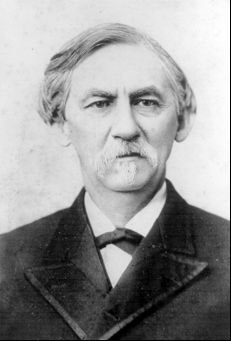 Dr. Stanford E. Chaille
Dr. Stanford E. Chaille
In November 1865 the Medical College of the University reopened its doors under Dean Tobias Richardson. On March 20, 1867, Dr. Stanford E. Chaille who, during the war, had been a surgeon in the Confederate Army, became Chair of Physiology and Pathological Anatomy – a position he held until his retirement in 1908. In 1874 Dr. D. Warren Brickell, former dean of the defunct New Orleans School of Medicine, organized the Charity Hospital Medical College. The tuition was well below that charged by the University of Louisiana Medical Department. In December 1874 Dr. Chaille criticized the administrators of Charity Hospital for granting to the new medical school rights and privileges equal to those of the Louisiana institution. In 1877 however, the Charity Hospital Medical College closed.Read More
A wealthy New Orleans merchant, Paul Tulane, bequeathed $1,250,000 to provide for a new university. In 1884 the various departments of the University of Louisiana were placed under the jurisdiction of the new institution, Tulane University. The changed status of the university resulting from the Paul Tulane gift had little immediate impact on the medical department. The new Board of Administrators conceded a large measure of autonomy to the medical department. Dr. Chaille became dean in 1885. As dean for 22 years, he helped usher Tulane Medical School into the era of modern medicine. The school’s faculty numbered 19. In that year Rudolph Matas was listed on the faculty as demonstrator of anatomy. In November of 1893 the entire medical department of the university became housed in the Richardson Memorial Building on Canal Street. In 1902 Mr. Alexander Hutchinson bequeathed $800,000 to Tulane University in memory of his wife Josephine. As a consequence of that gift the Richardson Building was renovated in 1907 as the Josephine Hutchinson Memorial Building. A year later an additional new Richardson Building was completed on the uptown campus. With an outstanding faculty and unrivaled facilities of Charity Hospital, the Tulane Medical Department entered the 20th century as the premier medical school in the South. On May 10, 1901, Dr. Chaille offered to resign his position as Dean and Professor of Physiology and Pathological Anatomy but the faculty unanimously reelected him to both positions. However in January 1907 the Tulane Board voted to make retirement mandatory for all professors at age 65. Chaille was 76 at the time. Chaille was asked to continue one more year - allowing him to complete the fiftieth year of his official service to the medical department.
In late 1908 the uptown campus Richardson Memorial Building was ready for occupancy for the first and second year medical students. This system, in which the preclinical years were taught at the Richardson Building and the clinical years at the downtown campus near Charity Hospital, remained until 1963 following which the 1st and 2nd year medical students were integrated on the downtown campus on Tulane Avenue.
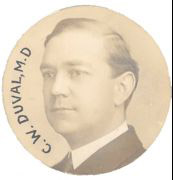 Charles W. Duval, M.D.
Charles W. Duval, M.D.
In March of 1908 separate Chairmanships were established for Physiology (accepted by Gustav Mann of Oxford University) and for Department of Pathology and Bacteriology (accepted by Charles W. Duval) who remained on the faculty until 1942. Chaille’s successor as dean was Dr. Isadore Dyer, among whose accomplishments was the establishment of the only leprosarium in the United States at Carville, LA.Read More
By the 1920’s the old Hutchinson Building on Canal Street was antiquated and overcrowded. By summer 1927 the faculty decided that a new medical building should be erected adjacent to Charity. On December 10, 1930 the new Josephine Hutchinson Memorial Building on Tulane Avenue (adjacent to Charity Hospital) was dedicated.
On July 15, 1942 Dr. Kostmayer was appointed dean for the duration of the war (replacing Dean Lapham who was called into military service). Dean Kostmayer served for three years. At the close of the war Dean Lapham returned to his duties.
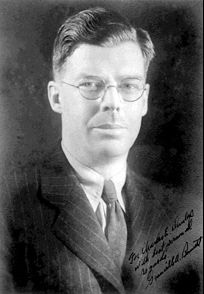
Dr. Granville Bennett
The Department of Pathology and Bacteriology in 1942-43 consisted of three assistant professors: William Herbert Harris, Andrew Vallois Friedrichs, and Samuel Harvey Colvin. Granville Bennett, M.D. was appointed as the Chair of the Department on May 1, 1943. He served as Chair from 1943-1944. He resigned on July 31, 1944. Dean Kostmayer appointed Charles Dunlap, M.D. as Acting Chair of the Department of Pathology.

Dr. Charles Dunlap
In 1944-45 the Department of Pathology and Bacteriology grew to five professors and five instructors. Charles Edward Dunlap, M.D., was appointed as Associate Professor and became Chairman in 1945. Chapman Hunter Binford, M.D. and William Howard Sternberg were instructors. At his memorial it was said of Dr. Sternberg that “ ‘Will’ touched those around him as a teacher, physician, friend and good Samaritan.Read More
He had a gentle spirit, a fulfilled life, and an illustrious career. He was a pioneer in gynecologic and endocrine pathology. As co-director of the Tulane Cytopathology Laboratory from 1963-1984, he proved to be a superb cytopathologist. In the 1960’s he devoted an increasing amount of time to cytogenetics, anticipating the future of that discipline. He created the Cytogenetics Laboratory which eventually evolved into the Hayward Genetics Center (he serving as Director from 1978-1984). He had an international reputation in ovarian pathology”.
In 1946-47 Charles Dunlap, M.D. was Professor and Head of the Department of Pathology and Bacteriology. Additional instructors included Guillermo Manuel Correra and James Arey. In 1947-48 the department included not only William Herbert Harris Sr., M.D. but also William Herbert Harris Jr., M.D.
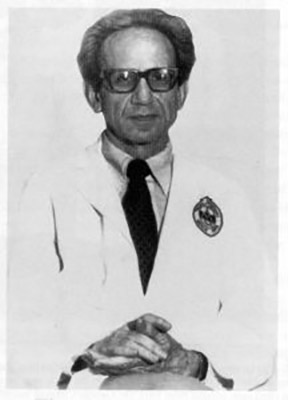
Dr. William Howard Sternberg
In 1948-49 this department became the Department of Pathology and William Howard Sternberg, M.D. was an assistant professor in that year. The Department included 5 professors and 5 lecturers and 3 instructors. In 1948-49, George Henry Hauser, M.D. joined as lecturer in the department.
In 1949-50 Wallace Henderson Clark, Jr., M.D. and John Henry Dent, M.D. joined the Department of Pathology as instructors.
In 1951-52 Emmanuel Farber, M.D. joined the Department of Pathology as Assistant Professor. In 1951, Professor Morris Shaffer renamed the recently separated Department of Bacteriology as the Department of Microbiology.Read More
In 1953-55, Walker B. Sorrell, M.D. joined the Department of Pathology as an Instructor in Pathology, under a Traineeship in Pathology of the National Cancer Institute.
In 1954-55 additions to the department included Herschel Sidransky, M.D., and John Moossy, M.D. Ruth Kirschstein, M.D. joined as Instructor of Pathology as a Fellow of the National Heart Institute, supervised by Dr. Charles Dunlap. She left Tulane to eventually fill a post at the NIH in clinical and experimental pathology research. In 1974, she became the first woman to become Director of the National Institute of General Medical Science at the National Institutes of Health.
By 1955-56 additions included Friedrichs Henry Harris, M.D. and Henry Clement Pitot III, M.D. as instructors. Dr. Charles Dunlap strongly encouraged and supported faculty members in developing investigative programs. Dr. Emmanuel Farber along with Drs. Henry Pitot and Herschel Sidransky developed a program in biochemical pathology that received grants from the National Institutes of Health for research projects and training. Dr. Henry Pitot was a direct descendent of James Pitot, who following the Louisiana Purchase was the first democratically elected governor of New Orleans. Dr. Henry Pitot was for many years Director of the McArdle Laboratory for Cancer Research at the University of Wisconsin in Madison. Drs. Henry Pitot and Herschel Sidransky were the first fellows in the Program. Dr. Wallace Clark developed an investigative program in Dermatopathology and electron microscopy.
In 1957-59, Margaret “Margôt” G. Hamilton joined the department as Instructor of Pathology and was later promoted to Assistant Professor of Pathology.
Also in 1957-58 Richard Jay Reed, M.D. became instructor in the department. He was to become the premier Surgical Pathologist of the department. Dr. Reed in his introduction to “New Concepts in Surgical Pathology of the Skin” wrote these words – “the ability to integrate microscopic findings into a meaningful interpretation is the distinguishing characteristic of a pathologist and is the art of pathology.” No one epitomizes those attributes more than Richard J. Reed, M.D. Dr. Reed is a “pioneer in dermatopathology and surgical pathology and his research has been influencing medical practice for much of the past 40 years. He has been a mentor and role model to two generations of Tulane trained dermatologists and pathologists. In appreciation of his many contributions to the field of surgical pathology and dermatopathology former students and friends joined together to establish the Richard J. Reed Professorship in Dermatopathology.” The Richard J. Reed, M.D. Award has been established to recognize outstanding resident performance in Surgical Pathology.
In 1958-59 Herbert Ichinose, M.D. became instructor in the department and Robert Craft Smith, M.D. became a lecturer in the department.
In 1959-60 Richard Lawrence Kempson, M.D. was appointed as Instructor in the department.
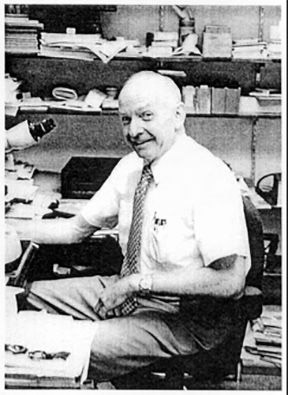
Dr. Richard Jay Reed
In 1961-62 Jerald Rudolph Schenken, M.D. joined the department as Assistant in Pathology.
In 1962 Emmanuel Farber of the pathology department received the Teplitz Award of the American Cancer Society for meritorious investigation by a scientist under age 45.
In 1962-63 Sidney Sigfried Schochet, Jr., M.D. joined the department as Instructor. Also, James C. Harkin, M.D. joined the Department of Pathology as Associate Professor. He was in charge of the electron microscopy research laboratory and neuropathology. Dr. Harkin received a Research Career Development Award from the National Institutes of Health, and was asked by the Armed Forces Institute of Pathology to write the Tumors of the Peripheral Nervous System fascicle, which he did in collaboration with Dr. Richard J. Reed.Read More
In 1963-64 Robert Lewis Flinner, M.D. joined the department as Assistant Professor.
In 1964-65 instructors Harry Prater, Jr., M.D. and Irma Overby, M.D. joined the department and in June of 1964, Dr. Alfred Marshak joined as a full Professor. His title was the American Cancer Society Professor of Experimental Pathology (Molecular Biology).
In 1965-66 Hans F. Smetana, M.D. joined the department as did Margaret Sheppard Skinner, M.D.
In 1967-68 Nina Dhurandhar, M.D. joined the department as Instructor. She established fine needle aspiration cytology at the Tulane University Medical Center.
In 1969-70 Lawrence Max Roth, M.D. joined the department as Assistant Professor. His contributions in gynecologic pathology expanded upon Dr. Sternberg’s work.
In 1970-71 Robert Edward Treuting, M.D. and Noberto Aaron Schor, M.D. joined the department as Assistant Professors.
In 1972-73 Virginia Maria Inigo Miller, M.D. joined the department as Assistant Professor. On December 1, 1973 groundbreaking ceremonies for the Tulane University teaching hospital was held.
1974-75 marked the final year that Charles Dunlap, M.D. chaired the department and in that final year the Department of Pathology included 2 Emeritus Professors, 5 full Professors, 3 Associate Professors and 3 Assistant Professors. The department had grown under Dr. Dunlap’s tenure, which began in 1944 and included 5 professors and 5 instructors. Dr. Charles Dunlap endeared himself to sophomore medical students in his final lecture yearly in the second year course. All will remember his words, “The love and respect and the affection which you will soon command as Doctors of Medicine – these are not things of your own making. These things have been earned for you by the decency and the humanity of countless generations of good men, of all faiths, over the past 3000 years. These men are dead and for the next few years, you will hold in your own hands this magnificent heritage. I hope that when it comes your turn to hand it on to your sons, not one of you will have cause to be ashamed”.
The official dedication of the Tulane Medical Center Hospital and Clinic was held on September 23, 1976. The clinic had already opened in August of 1976. The first surgical procedure took place on December 7, 1976. Dr. James C. Harkin performed the first frozen section in the new hospital on December 17, 1976.
In 1975-76 John Jarrell, Jr., M.D. joined the Department as Assistant Professor.
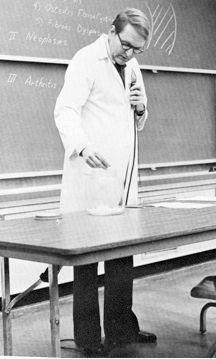
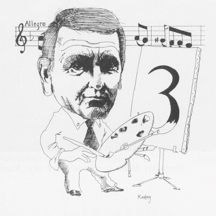
Dr. Horton Anton Johnson
Horton Anton Johnson, M.D. assumed the Chair of Pathology in 1975. Dr. Johnson, affectionately known to the students as “HoJo”was a man with a wide breadth of learning in the humanities for which he was deeply respected. During his tenure the tutorial approach to teaching assumed a prominent component of the sophomore course in pathology. The pathology course achieved Owl Club Award recognition for outstanding course during his tenure. Dr. Johnson achieved Owl Club recognition for his teaching abilities and his students will remember his now famous “Rule of 3” regarding any disease process, i.e. any student who retains three salient characteristics of each pathologic disorder studied will have achieved a sound knowledge base upon which to build. Philip J. Daroca, Jr. M.D. joined the department as Assistant Professor in 1975. Mathurin Jerome, M.D., Clinical Pathology, joined the department in 1976. Read More
In 1976-79 Howard Quittner, M.D. joined the department as Professor of Pathology and Adjunct Professor of Biochemistry. Patrick Donovan Walker, M.D. (nephropathology) joined the department as Assistant Professor in 1979. Emmanuel Shapira M.D. joined the department in 1979 as professor of Pathology and Pediatrics. He eventually became Chief of the Section of Genetics.
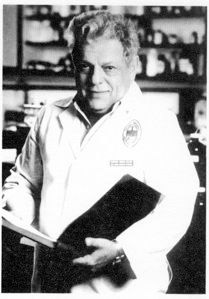
Dr. Emanuel Shapira
In 1980 Janis Page White, M.D. joined the department.
In 1981 David English Smith, M.D. who is, currently in Galveston, Texas and is a volunteer instructor at UTMB, joined the department as Professor of Pathology while also serving as an Associate Dean of the School of Medicine. In 1983 Bryce Owen Bliss, M.D., a former resident, joined the department as Professor of Pathology as did George Louis Leonard, M.D. as Associate Professor of Pathology. George L. Leonard, M.D. had a deep interest in the history of medicine and he chaired the arrangements committee for the meeting of the American Association for the History of Medicine (AAHM) in New Orleans, in 1982. Theodore William Koerner, Jr., M.D. also joined the department as Assistant Professor (Clinical Pathology). The academic year 1983-84 was the last to be chaired by Horton A. Johnson, M.D.
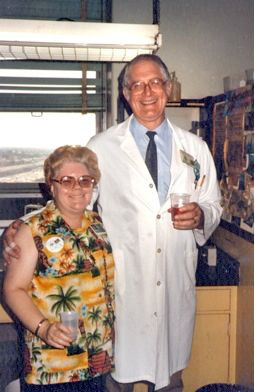 Dr. Bryce Bliss
Dr. Bryce Bliss
and Ms. Ledonia Michel
In 1984-85 the Acting Chairman of the Pathology Department was Bryce Owen Bliss, M.D. Under his tenure Steve Michael Covington, M.D., as Assistant Professor, and Waltraud Maria Watzinger, M.D. as Assistant Clinical Professor in Cytopathology became academic staff to the department.
1986-87 Richard J. Reed, M.D. became Acting Chairman of the Department. Academic staff added to the department included Harry T. Pigman, M.D., as Assistant Professor, Donald R. Pulitzer, M.D. as Clinical Instructor, and Nancy Covington, M.D., as instructor.
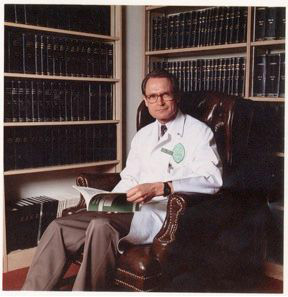 Dr. Michael A. Gerber
Dr. Michael A. Gerber
1987-88 Michael A. Gerber, M.D. assumed the Chair of the Department of Pathology. His tenure marked the inception and development of significant and substantial basic research and a Molecular Pathology Section of the department. Additions to the department included Assistant Professors Pamela C. Martin, M.D. and Lynn Bernal-Green, M.D.
In 1988-89 Cesar Fermin, Ph.D. and James S. Malter, M.D. joined the department. E. Randolph Eckert, M.D. joined as Instructor. Dr. Fermin created the Centralized Tulane Imaging Laboratory (CTIC).Read More
The CTIC was funded in part by a grant from the Louisiana Board of Regents, and was recently updated with another grant from LBoR, Deans’ Funds, outside donations, and departmental funds. The objective of the CTIC is to provide Tulane faculty, students, and trainees with a state-of-the-art imaging facility capable of publication and presentation quality images. The CTIC is used by hundreds of Tulane and outside staff and it serves a very important academic teaching, research, and training function.
In 1989-90 Sanda Clejan, Ph.D. joined the department as Professor of Pathology. Assistant professors joining the department included: James H. Harrison, Ph.D., Lee Henderson, Ph.D., Lidija M. Petrovic, M.D.
In 1991-92 Terence T. Casey, M.D. joined the department as Associate Professor and Flora B. Shoaf, M.D. joined as Assistant Professor. In 1991 the department was renamed the Department of Pathology and Laboratory Medicine.
In 1992-93 Wai-Choi Leung, Ph.D. joined the department as Professor of Pathology. Suzanne Meleg-Smith, M.D. joined as Associate Professor of Pathology and Head of Renal Pathology. Dr. Smith became Director of the Autopsy Service and created a useful Autopsy Pathology Manual for residents and the Rokitansky Award for residents to recognize excellence in Autopsy Pathology. William Robichaux, M.D. joined as Assistant Professor. K. Barton Farris, M.D. joined the department as Associate Professor. John R. Krause, M.D. joined as Professor of Pathology and Director of the Clinical Laboratory and Chief of the Section of Hematopathology. He also assumed the Directorship of the Pathology Residency Program. William M. Murphy, M.D. joined as Professor of Pathology and Director of Anatomic Pathology.
In 1993-94 Arnold R. Brody, Ph.D. accepted an appointment in the department to establish a Lung Biology Program. This program now consists of four senior faculty members and about 20 junior faculty, students, post-docs and technicians. Dr. Brody is the Principal Investigator on several multi-year research grants from the National Institutes of Health and he directs a state-supported Environmental Respiratory Disease Research Center and an NIH Training Grant in Lung Cell and Molecular Biology. The Pathology Department has provided an excellent home for the Lung Biology Program which is focused on developing an understanding and effective treatments of lung diseases caused by environmental influences.
Scott M. Freeman, M.D. as Associate Professor and Aizen J. Marrogi, M.D. and Russell B. Wilson, Ph.D. as Assistant Professors were added to the academic staff.
In 1994-95 Salima Haque, M.D., Krzysztof Moroz, M.D., Cindy Morris, Ph.D., Gilbert Morris, Ph.D., and Gary Hoyle, Ph.D., as Assistant Professors further expanded the departmental academic staff. Dr. Moroz established the Quantitative Image Analysis laboratory.
In 1995-97 William Luer, M.D. as Assistant Professor and Javed Gill, M.D. as Instructor joined the department.
Srikanta Dash, Ph.D. was recruited by Dr. M. Gerber to direct hepatitis research in the department. In 1997 the tragic and untimely death of Michael Gerber, M.D., Chairman of the Department, shook the department with the loss of “an educator, scientist, activist for beneficial change, a supporter of young scientists and clinicians” (a quotation from his memorial service), and the initiator (in 1991) and Director of the Molecular and Cellular Biology Graduate Program. In 1998 the tragic and untimely death of Emmanuel Shapira M.D., Ph.D. (Director of the Human Genetics Program and the Hayward Genetics Center) dealt another significant loss to the Medical Center. The Hayward Genetics Center was initially developed by and established in the Department of Pathology by William Sternberg, M.D. and Maria Varela, M.D. Dr. Shapira was recruited in 1978 as Professor of Pathology and Head of the Section of Genetics.
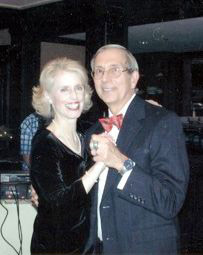 Dr. and Mrs. John R. Krause
Dr. and Mrs. John R. Krause
With the passing of Dr. Gerber, John Krause, M.D. became Acting Chairman of the Department of Pathology and was appointed as Chair of the Department of Pathology and Laboratory Medicine in 1999. Dr. Krause established the Molecular Pathology Laboratory at Tulane University Medical Center. During his tenure the following individuals joined the faculty of the department: Byron E. Crawford, M.D., Mary B. Beasley, M.D., Meena Bhattarcharjee, M.D., James Hyland, M.D.,Ph.D., Frank Bastian, M.D., Odile David, M.D., Jane Dry, M.D., Mahnaz Shahidi-Asl, M.D., Janet L. Schmid, M.D., and Alun Wang, M.D.Read More
Dr. Wang is the first appointee to the Richard J. Reed Professorship in Dermatopathology. Fellowships in Hematopathology, Dermatopathology, and Cytopathology have been valued additions to the department’s educational mission. That educational mission has recently achieved renewed recognition by an Owl Club award for best sophomore course in 2003-04 and by Dr. B. Crawford being chosen as recipient of the Teaching Scholar Award on May 13, 2004. The Department of Pathology meets its mission of resident education in its diversity including service, applied research, comprehensive interdepartmental clinico- pathologic conferences and Tumor Boards, and its basic research arms - including lung biology, molecular and cell biology, hepatopathology, gynecologic pathology and cytopathology, gastrointestinal pathology, neuromuscular pathology, hematopathology, and dermatopathology. While by comparison this department is relatively small for such diverse missions, it meets its missions through the dedication of its attendings, residents, technical staff and its supportive and capable administrative and clinical staff. Also instrumental in meeting the missions of the Department, are the former photographers, Raymond Johnson and Ellis Diaz, and the current photographer, Donald Olivares, whose efforts cannot go unrecognized.
Acknowledgements:
Great, big thanks to Beatris DeLucca, Charlene Esteves and Corlis Trepagnier for their administrative assistance, patience, and attention to detail on this project. Thanks also go to Dr. Richard J. Reed and Dr. Wallace K. Tomlinson for their suggestions and critique of this work.
References:
- Duffy, John: The Tulane University Medical Center. One hundred and fifty years of medical education. 1984, Louisiana State University Press. Baton Rouge and London.
- Tulane University of Louisiana. Medical Department Bulletins. 1900-1910.
- Tulane University of Louisiana. Medical School Bulletins. 1910-1995.
- T-Wave 1982. Tulane University School of Medicine (yearbook).
News Archive
Chair's Message July 1, 2021Read More
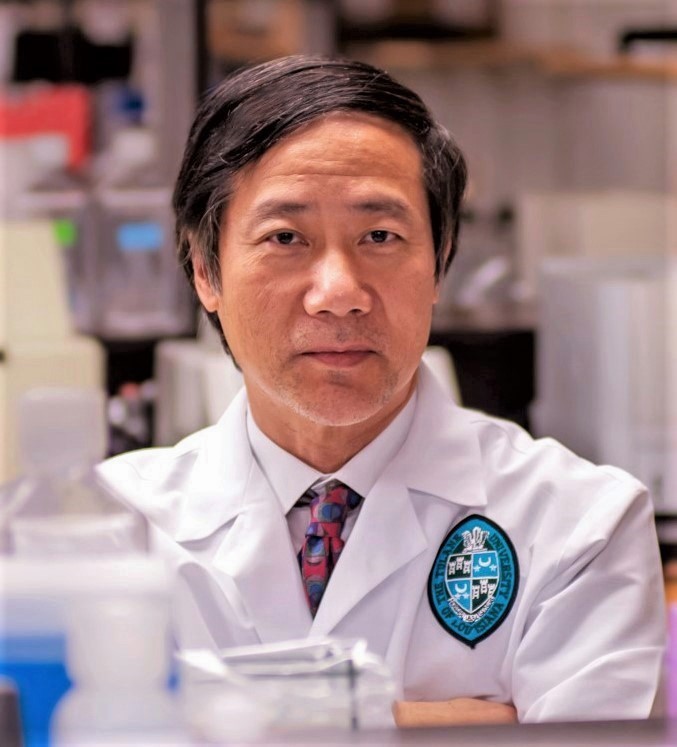
It has been 15 months since my last message in April 2020, in which I focused on what became the most critical pandemic since 1918. Since January 2020 more than 33 million people had contracted SARS-CoV-2 in the US; globally, by the end of June 2021, nearly 180 million people have been infected. Covid-19 has had a profound impact on all aspects of our personal and professional lives, and yet we have rallied to overcome this tremendous difficulty as we now begin to see the light at the end of the tunnel. The SARS-CoV-2 vaccines have been developed and implemented with unprecedented speed, thus facilitating the continuous decline of Covid-19 around the world. Although it is still a long way to have all vaccinated, we are now on solid ground to manage the pandemic and transit into a more normal life and work environment here in the States.
As history chronicles its course, what we do today to meet this challenge also becomes part of that journey. The Department of Pathology and Laboratory Medicine has contributed its effort in the battle against Covid-19. Almost at the very outset of the pandemic, our Department led the effort to bring a commercial test to the Tulane Medical Center and implemented a EUA test in the Molecular Diagnostics Laboratory (MDL) of our Department. In particular, the testing facility in our Department has significantly improved our diagnostic and screening capacity for the needs inside and outside the Tulane community. Since April 1st, 2020, the MDL has performed nearly 400,000 Covid-19 tests, facilitating the continuous operation of the University’s core activities including those vital to the research and education mission of the University. The successful implementation of the testing program would not be possible without the collaboration among the many members of our community and the strong engagement and support from the leadership. The Faculty of our Department has also actively participated in multiple Covid-19 related research projects with internal and external collaborators, and their results have been published in high impact journals.
Throughout the course, the vision we have for the Department has not changed, nor has the commitment to our patients, trainees and members. Despite the pandemic, our academic and clinical activities have not waned. We have continued our education programs through on-line platforms, recruited new residents, fellows, and graduate students for the new academic year. Our innovative curriculum in both science-oriented and PA-oriented programs continue to enrich the experience of the trainees during their time in our Department. Our research program has expanded with the joining of five new faculty members to the Department. Our research funding has significantly increased with efforts that can be attributed to all our faculty members. We have also resumed the recruitment of clinical faculty after the decline in the last several years. The arrival of four new clinical faculty in July and August of this year will enhance our clinical capacity, improve resident education and promote the scholastic productivity of faculty and trainees.
The past year’s extraordinary difficulty has not defeated us. In contrast, we have transformed the challenge into opportunities to develop our strength in the diagnostic field; reposition ourselves in clinical services; absorb research talents and expand our education programs. My confidence and faith that the journey in the coming years will make us stronger and better through new initiatives, programs, and services continues without fail.
Xiao-Ming Yin, MD, PhD, FAASLD, FCAP
Dr. Donald R. Pulitzer and Donna G. Pulitzer Professor and Chair
Department of Pathology and Laboratory Medicine
Chair's Message April 12, 2020Read More

We are presently living in unusual times. Most would say that this time has not been experienced by anyone in the last 100 years, well, not since 1918 when the last pandemic occurred. The Covid-19 pandemic has profoundly affected our personal and professional lives. As history chronicles its course, what we do to meet this challenge also becomes part of that journey.
Yet, we firmly believe that we will win the war against this disease and the pandemic will be overcome. Now more than ever we need to challenge ourselves to dig deep and achieve more breakthroughs for the betterment of life. While the situation has changed since February when I first arrived, the vision we have for the Department has not. Our commitment to our patients, trainees and members has not changed. We have closely followed the development of Covid-19 globally and locally, and actively engaged our pathologists in diagnostic services. Toward that end faculty members from our department have led the effort to bring both a commercial test in the Tulane Medical Center and the CDC-developed test in the Molecular Pathology Laboratory (MPL) in our Department. The availability of these testing modalities has significantly improved our patient care in different settings both inside and outside the Tulane community. We would like to emphasize that the successful operation of the testing would not have happened without the collaboration between many members in our community and the strong support from the leadership. With the goal of bringing our clinical practice to a higher level, we look forward to more of these collaborations that will advance our diagnostic services in innovative ways.
Despite the pandemic, we have seen a tremendous enthusiasm from our faculty, residents and students in all academic and clinical activities. Academically, the online platform continues to offer courses and research seminars of high-quality content; the efforts of our faculty members have made all of this possible. Our faculty members are in the forefront of the medical student education. We have successfully matched three of our top choice residents for this year. We are looking forward to new applicants for our Master’s programs, including the only Pathologist Assistant Program in the Southern region of the country. Our innovative curriculum in both science-oriented and profession-oriented programs will enrich the experience of the students, thus facilitating their careers in the direction they choose.
Our Department is fortunate to have a talented team of research faculty. Our research mission will continuously emphasize the Department’s traditionally strong areas in cancer, GI and liver diseases, and viral pathogenesis. But we will expand our exploration into new subject areas that are significant and impactful. We will strengthen our research capability, seeking new research opportunities. An exciting development is the creation of a Covid-19 biobank, which will be both scientifically significant and beneficial to the Tulane research community.
We have been challenged to chart the unknown waters of this new pandemic. I am confident this journey will make us stronger and better through new initiatives, programs, and services. Through the efforts of faculty, trainees and staff, we will triumph over this disease and contribute a vital service to our community.
Sincerely,
Xiao-Ming Yin, M.D., Ph.D.
Professor and Chair of Pathology
Chair's Message April 27, 2020 Read More
Dear Colleagues:
As you all know, Dr. Bryon Crawford, after having been part of the Tulane family for more than two decades, will be leaving here by the end of this April to take the position of Chair of the Department of Pathology, LSU School of Medicine at Shreveport.
Dr. Crawford, who had served as Interim Chair of this Department for two times, is one of our well respected academic leaders in pathology and laboratory medicine field. At Tulane, he has also served as the Associate Dean of Academic Affairs; Director of the HCA-TMC Laboratories and Department’s Histology Laboratory, Vice Chair of the Department, Director of Anatomic Pathology, Co-Director of the Pathology Residency Program, Director of the PA program, and Course Director of Mechanisms of Disease for undergraduate medical education. He has left many positions to be filled in.
Dr. Crawford joined our Department in 1998 after a successful career in the private sector. His contributions to our Department are numerous, substantial and remarkable. In addition to the responsibilities associated with a variety of leadership positions mentioned above, he has devoted much of his efforts in medical education and quality improvement in clinical services. Dr. Crawford is the recipient of many regional and national teaching awards, including the prestigious national Michele Raible Distinguished Teaching Award bestowed by the Association of Pathology Chairs. He is a member of numerous national and international medical education committees and aided in the development of non-traditional teaching methods. As a sign of clinical excellence, Dr. Crawford has published numerous articles on GU pathology; GI pathology and bone pathology. As the team leader Dr. Crawford has led many CAP inspections for both the TMC laboratories and many other laboratories across the nation. Most recently he was the driving force for the successful implementation of Covid-19 testing at TMC.
Please join me in extending our complete gratitude for the remarkable accomplishments, leadership and service Dr. Crawford has given to our Department for many years. We wish Dr. Crawford a fond farewell and our sincere wishes for every success in his new position as Chair of Pathology, LSU-Shreveport.
Sincerely,
Xiao-Ming Yin, M.D., Ph.D.
Professor and Chair of Pathology
Chair's Message April 7, 2020 Read More
Dear Colleagues:
The past several weeks have witnessed the tremendous impact that COVID-19 has had on the personal and academic life of every one of us. This is a difficult time but the pandemic will be overcome! While many of our normal activities are disrupted, our faculties are still providing quality patient care, conducting online teaching, and maintaining essential research functions. Departmental staff continue providing the necessary logistic and administrative support. We would like to thank all of you whole-heartedly for what you have been doing. We would also like to emphasize that you do your best to stay healthy, practicing social distancing and wearing the proper PPE whenever necessary, including the face mask.
I am also pleased to inform everyone that our Department has actively participated in the effort to fight against the COVID-19 pandemic. Dr. Byron Crawford led a remarkable effort to bring the Roche COVID-19 diagnostic test to Tulane Medical Center laboratory on March 30th, in collaboration with University Medical Center. With this test physicians can obtain results on the same day, instead of having to spend days waiting for results from outside laboratories. TMC will also soon launch the Abbott’s ID NOW system, which can provide a rapid test in 5 minutes for positive samples. Dr. Jack Scott, who will succeed Dr. Crawford as the new Director of the TMC laboratory and POC services, will continuously provide the medical guidance for the testing at TMC laboratory.
Starting on April 1st, our Department’s Molecular Pathology Laboratory (MPL) has also launched clinical testing for the COVID-19 virus. This test is based on the protocol developed by the CDC and has obtained emergency use authorization by the FDA. MPL can also provide test results with a 12 to 24-hour turnaround time. This operation is made possible through a productive collaboration with Dr. Robert Garry of the Department of Microbiology, and is strongly supported by the School of Medicine. The testing team is led by Dr. Di Tian, CLIA Director, and Dr. Zhen Lin, Technical Director, of MPL, and is assisted by technical staffs and volunteers from both our department and other departments. The operations of MPL and TMC laboratories will be complementary to each other in providing services to different populations that require COVID-19 testing. We are really proud of our faculty members for their dedication and hard work to bring in the clinical testing in both laboratories.
I plan to continue updating you the progress from our department during this unusual time. Please also feel free to bring to me and/or Catherine Downs any stories that you think worth sharing in our community.
Thank you very much and stay healthy!
Xiao-Ming Yin, M.D., Ph.D.
Professor and Chair of Pathology
Archived
Pathways Newsletter Archive
PATHWAYS Newsletter, April 2025
PATHWAYS Newsletter, July 2024
PATHWAYS Newsletter, June 2023
PATHWAYS Newsletter, December 2022
PATHWAYS Newsletter, June 2022
PATHWAYS Newsletter, November-December 2021
PATHWAYS Newsletter, October 2021
PATHWAYS Newsletter, Winter 2017
PATHWAYS Newsletter, Winter 2016
PATHWAYS Newsletter, Winter 2015
PATHWAYS Newsletter, Winter 2014
PATHWAYS Newsletter, Winter 2013
PATHWAYS Newsletter, Summer 2013
PATHWAYS Newsletter, Summer 2012
Faculty & Staff Appointments
New Faculty appointments - Nov 25, 2024
The Department welcomes the following physicians to join us as new faculty members in October 2024: Dr. Akannsha Singh, as Instructor, and Dr. Carol Bitar and Dr. Michael Sinnott as adjunct faculty.
Welcome New Staff Members - October 06, 2023
The Department of Pathology and Laboratory Medicine is pleased to welcome two new staff members who recently joined us.
Yolanda Jones worked previously in Pathology as a Billing Coordinator from 2008-2020. Ms. Jones has returned to the Department in the capacity of the Grants and Contracts Officer.
Genevieve “Evie” Burguieres holds a Bachelor of Science degree from James Madison University, a Masters of Preservation Studies from Tulane, and a Juris Doctorate from degree from New England Law, Boston, MA. Ms. Burguieres joins the Department as Administrative Program Coordinator—Education.
Welcome New Faculty Members - October 05, 2023
Dr. Mercedes Ficarra, who joins the Department as an Associate Professor, received her medical degree at the Facultad de Medicina of the University of Cantabria in Santander, Spain in 1988. She completed her Pathology residency and Cytopathology fellowship at Tulane. Board certified in Cytopathology, and Anatomic and Clinical Pathology, she worked in various capacities as a pathologist and a director of laboratory within the HCA system before she joined us on September 15th.
Dr. Ibrahim Aburiziq joins the Department as an Assistant Professor on October 2nd. He received his Bachelor of Science degree in Biology from the American University of Beirut (1993), and MBBS from Jordan University of Science and Technology (2003). He completed his residency in Anatomic and Clinical Pathology at Baylor University Medical Center (2012), and fellowships in Hematology (University of Arkansas for Medical Sciences, 2014) and in Surgical Pathology (Washington University School of Medicine, 2015). He has provided general pathology services and laboratory directorship in several hospitals in Guam, and Savannah, GA before he joined the Tulane.
Taylor MacGowan, M.S., P.A. (ASCP), received a Bachelor of Science Degree in Biology from the University of Alabama at Tuscaloosa (2018), and graduated from the Pathologists’ Assistant Program at Tulane University School of Medicine (2022). Ms. MacGowan has worked as a Pathology Technician (Boston Children’s Hospital, 2020), and a Grossing Technician at Quantum Pathology in Waltham, MA (2018-2020). She joins the Pathology faculty on Oct 9th as an Instructor.
Farewell to Dr. Yoxtheimer - October 05, 2023
The Department of Pathology held a farewell reception for Dr. Lorene Yoxtheimer, Assistant Professor, on September 28, 2023. Dr. Yoxtheimer joined the Department in 2019 and is relocating to a new position in Fargo, ND. We wish her every success in her new endeavor.
Congratulations to Dr. Di Tian and the COVID Testing Team for being awarded the Tulane Spirit Award - August 31, 2023
Dr. Di Tian and the COVID Testing Team were awarded the prestigious Tulane Spirit Award by President Fits in recognition of their unwavering dedication and exceptional contributions to both the cherished Tulane University and the broader local community.
Drs. Shams Halat and Matthew Stark have been named 2023 Top Doctors (Pathology) in New Orleans Magazine - August 1, 2023
Congratulations to Drs. Shams Halat and Matthew Stark for being named Top Doctors of Pathology in the New Orleans Magazine
